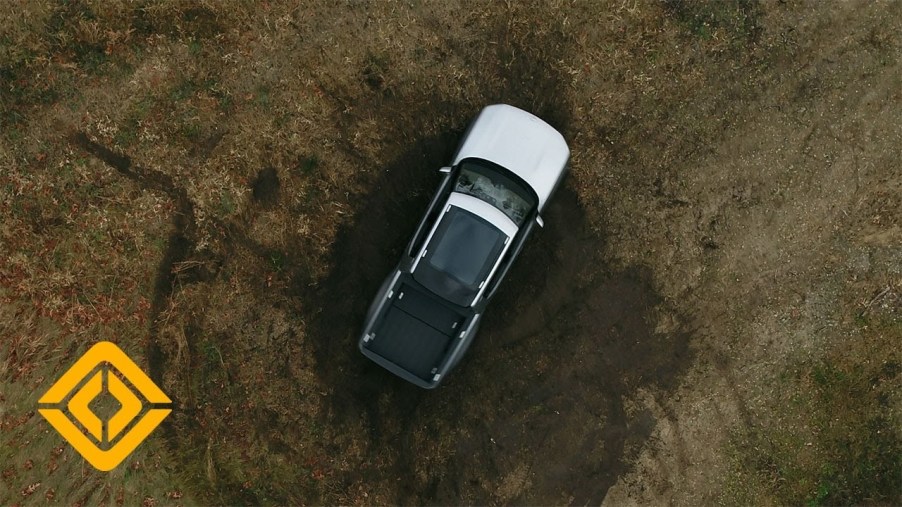
Are These Electric Truck Features Actually Useful, or Just Gimmicks?
It’s easy, with how today’s media consumption, for an automaker to market any feature as something ground-breaking. Especially with electric pickup trucks, a segment where manufacturers need to differentiate themselves. Some, like Bollinger, let the truck’s capability and design do the talking. Others, such as Tesla, can sometimes lean on sensationalist methods. Is setting up a tug-of-war, or towing a purported million pounds, actually relevant to every-day consumers? Or are these electric truck features, like the one Rivian just announced, simply more marketing gimmicks?
Rivian’s “tank turn”
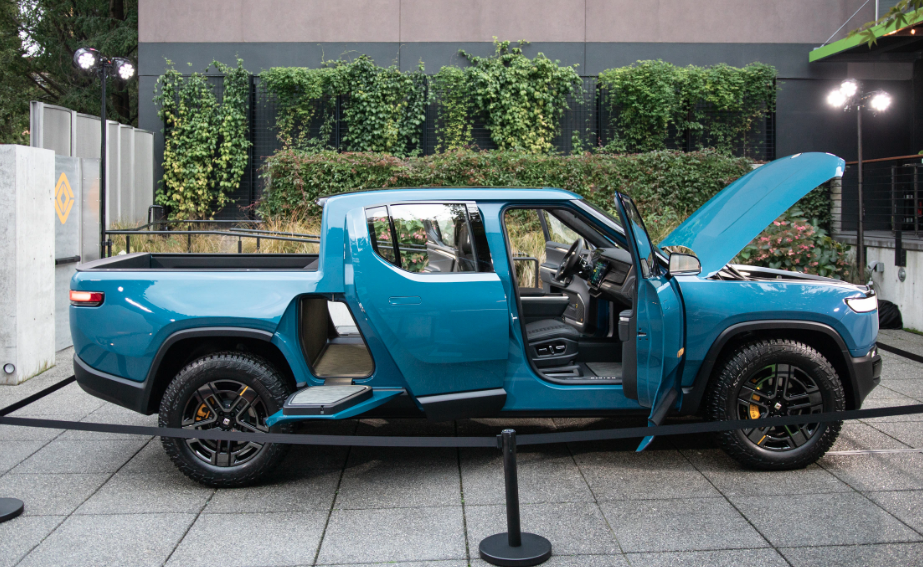
Rivian’s R1T and R1S electric truck and SUV won’t start production until late 2020. But hot on the heels of a $1.3 billion investment, the automaker showed off something both vehicles will offer: the “tank turn.”
The video Rivian released shows an R1T spinning on a patch of muddy grass. But this isn’t the usual donut. The electric truck is spinning within its own length. It’s called a “tank turn,” The Drive explained because it’s reminiscent of how tanks spin one tread forward, one in reverse, to pivot in place. The R1T doesn’t have treads, but it does have one motor per wheel. Each motor operates independently, which, Road & Track reports, is what lets Rivian’s vehicles perform the maneuver. Two spin forwards, two spin backward.
It is a neat party trick, but will this actually be useful? The ability to rotate the back wheels independently of the front ones is useful both on- and off-road. Jalopnik pointed out that Rivian’s “tank turn” is reminiscent of GMC’s Quadrasteer, a four-wheel-steering system that rotated the back wheels opposite the fronts to tighten a truck’s turning radius. It would help the R1T and R1S, and the potential rally model, be more maneuverable on tight streets and narrow off-road trails.
However, the “tank turn” would be limited to off-roading only. Autoblog reported that when Rivian attempted to patent “tank turn” and “tank steer”, Rivian’s chief engineer Brian Gase claimed the feature would only work on loose surfaces like dirt or gravel. Trying it on pavement would, in his words, “break s**t.”
The “tank turn,” then, is a bit of a gimmick. But it’s also an exaggeration of a potentially useful feature.
The Tesla Cybertruck’s windows
Some of the features Tesla CEO Elon Musk demonstrated during the Cybertruck’s debut were the electric truck’s windows and body panels. The windows were allegedly bulletproof, and Tesla’s chief designer smacked the stainless steel panels without denting them. But, since then, they’ve both been the cause of some concern.
On stage, the windows didn’t appear to be bulletproof after chief designer Franz von Holhausen smashed them with some steel balls. Musk claimed that hammering the body panels led to some unseen cracks, which weakened the glass enough for the balls to shatter it.
Later, Musk tweeted a video allegedly taken before the debut, where von Holhausen’s throw did not lead to shattered glass. However, while Motor Trend backed-up the time-frame of the video, it also appeared to show the electric truck’s door to be slightly ajar. Meaning, the windows didn’t take the throw’s full force.
But even ignoring the contradictory evidence, does anyone really need bulletproof glass? If Tesla really means to make the glass bulletproof, it will be much more difficult to see out of. And even if the Cybertruck receives bullet-resistant glass, what happens if someone has to smash a window to get out? Or rescue someone who’s trapped inside? It’s an excellent marketing stunt, but it isn’t a truly useful feature.
The Tesla Cybertruck’s stainless steel body panels and overall design
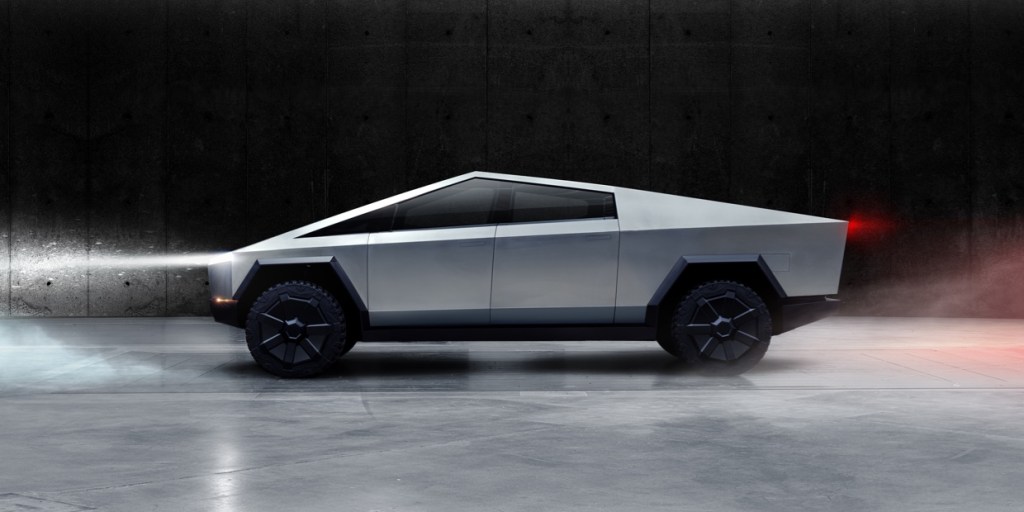
Tesla’s choice of relatively-thick stainless steel for the Cybertruck’s body, while somewhat unconventional, does appear to have rational decision-making behind it. As does, interestingly, the electric truck’s overall design.
While claiming to be inspired by Blade Runner, the truck’s triangular shape does also make it relatively strong. Provided, of course, it’s made out of a rigid material. Which the 30XX alloy stainless steel appears to be. It’s roughly 3 times as thick as the usual truck body panel, and Musk claims it’s too hard to stamp. And, to be fair, having body panels that are hard to dent is very useful for side-impact collisions. The lack of paint also makes the Cybertruck stand out and makes it easier to paint.
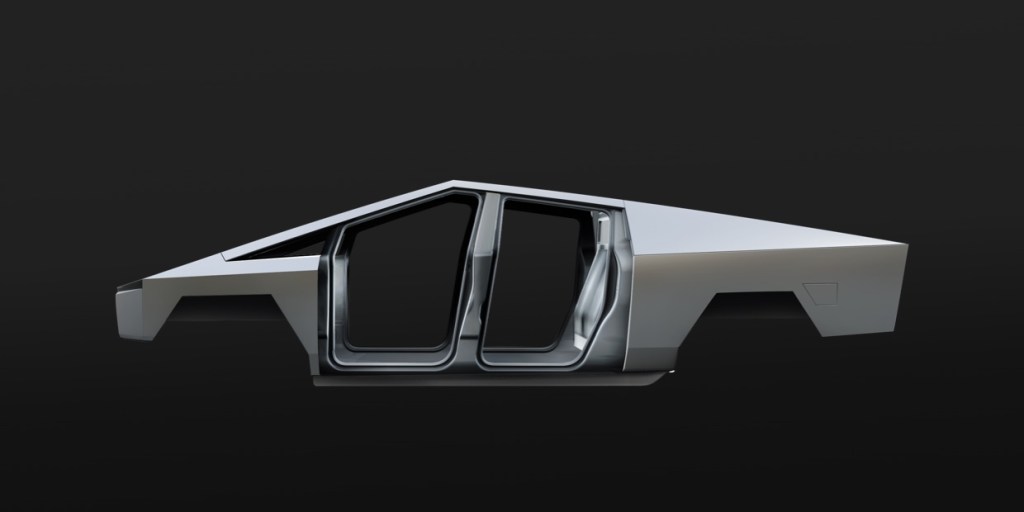
But this design also has some problems. Scratched stainless steel can be difficult and expensive to repair. And having rigid body panels is exactly what you don’t want in frontal collisions—indeed, the Cybertruck appears to lack crumple zones and airbags altogether. Stainless steel is also heavy, which cuts down on range and makes the Cybertruck arguably more dangerous to civilians and smaller vehicles.
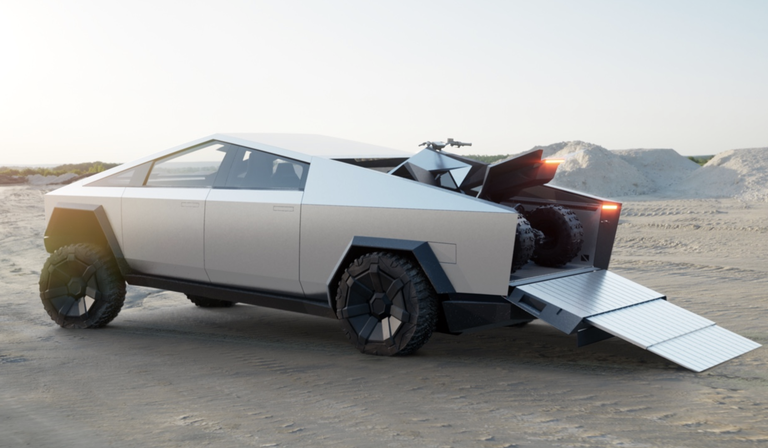
Although, that may have been somewhat on purpose. Increasing weight means the Cybertruck won’t compete with ‘light-duty’ pickups like the F-150, but medium- and heavy-duty ones, instead. And while the Cybertruck is out-classed in towing compared to those trucks, it also means the Tesla will be exempt from certain EPA, and possible crash, tests.
In short, the Cybertruck’s stainless steel body appears to be more gimmick than a useful feature. Its downsides out-weigh the benefits. It’s a striking design, but it isn’t as functional for normal consumers as it could be.
The electric Ford F-150’s “million pounds” ad
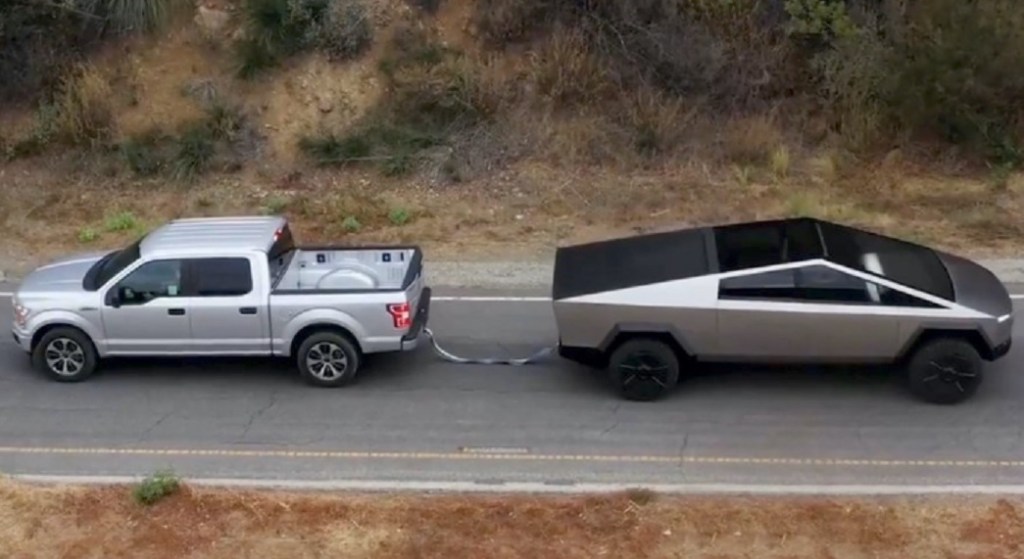
Tesla may have fudged the set-up of its Cybertruck-F150 tug-of-war video in the Cybertruck’s favor, but it’s not the first automaker to take advantage of physics like that. Ford did it, too, with its electric F-150 prototype.
In Ford’s ad, the electric F-150 is hooked up to a trailer weighed down with a claimed one million pounds. And, after some struggling and suspenseful build-up, the truck starts to haul it. It makes for a great ad, but it doesn’t really capture what Ford’s electric truck will actually be capable of.
The trailer in question was on railroad tracks. As Jason Fenske of Engineering Explained showed, train wheels and tracks produce less friction than truck wheels and tires on pavement. Basically, any truck with the same towing capacity as the electric F-150 could do the same thing. And, to be fair, Ford hasn’t revealed what that towing capacity could be. But Ecotuned’s electric F-150 can tow up to 18,000 pounds.
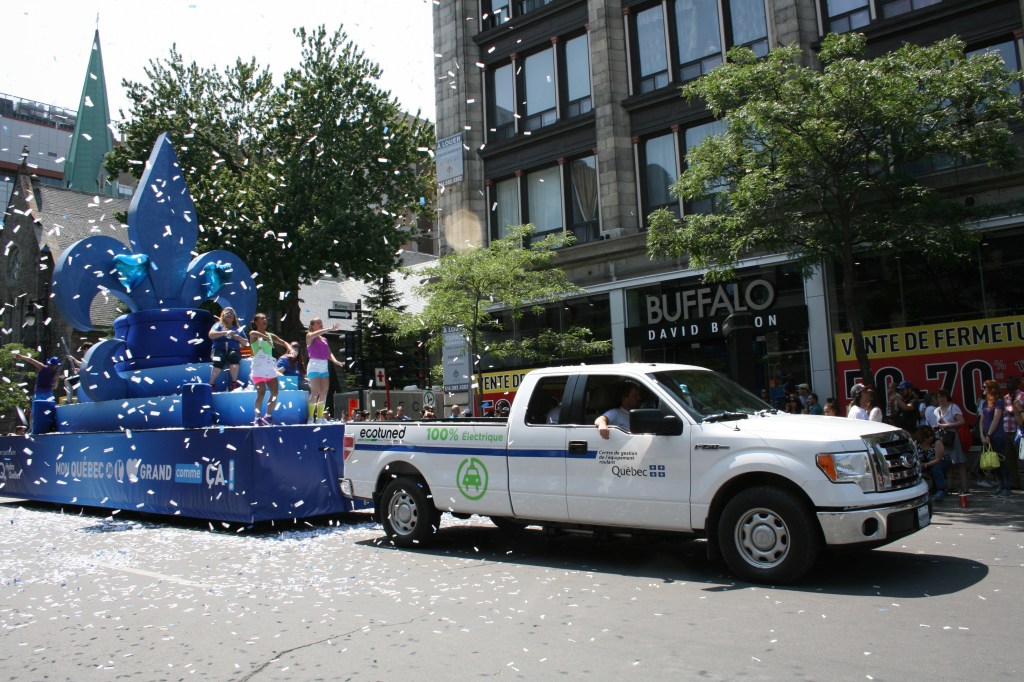
Yes, the electric F-150 can presumably tow a lot. But the vast majority of customers won’t be loading up train-wheel-equipped trailers. This isn’t a gimmick per se, then, but a kind of hyperbolic demonstration of a feature.


